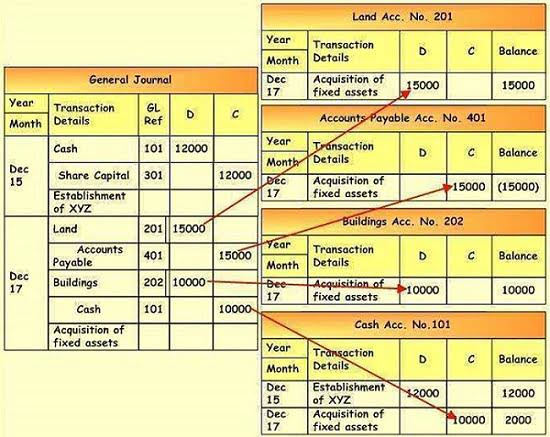
Assets are what a company owns or something that’s owed to the company. They include tangible items such as buildings, machinery, and equipment as well as intangibles such as accounts receivable, interest owed, patents, or intellectual property. Companies of all sizes finance part of their ongoing long-term operations by issuing bonds that are essentially loans from each party that purchases the bonds.

Importance of Liabilities for Small Businesses
Liabilities are any debts your company has, whether it’s bank loans, mortgages, unpaid bills, IOUs, or any other sum of money that you owe someone else. If you’ve promised to pay someone a sum of money in the future and haven’t paid them yet, that’s a liability. Suppose a company receives tax preparation services from its external auditor, to whom it must pay $1 million within the next 60 days. The company’s accountants record a $1 million debit entry to the audit expense account and a $1 million credit entry to the other current liabilities account. When a payment of $1 million is made, the company’s accountant makes a $1 million debit entry to the other current liabilities account and a $1 million credit to the cash account. Current liability accounts can vary by industry or according to various government regulations.
What Goes on a Balance Sheet?
The AT&T example has a relatively high debt level under current liabilities. Other line items like accounts payable (AP) and various future liabilities like payroll taxes will be higher current debt obligations for smaller companies. Any debt a business or organization has qualifies as a liability—these debts are legal obligations the company must pay to third-party creditors. Examples of liabilities include deferred taxes, credit card debt, and accounts payable.

Liabilities and Business Operations
If you have employees, you might also have withholding taxes payable and payroll taxes payable accounts. Like income taxes payable, both withholding and payroll taxes payable are current liabilities. As you continue to grow and expand your business, you’re likely going to take on more debt as you go.
- Because chances are pretty high that you’re going to have some kind of debt.
- Familiarity with these concepts can help stakeholders make informed decisions about a company’s financial well-being and future prospects.
- The current month’s utility bill is usually due the following month.
- In other words, net worth represents the residual interest in a company’s assets after all liabilities have been settled.
- Current liabilities are used as a key component in several short-term liquidity measures.
When you owe money to lenders or vendors and don’t pay them right away, they will likely charge you interest. But the accountant had a good laugh and went on to share the details of the art gallery’s profits, which looked very what falls under liabilities in accounting respectable. When the art gallery entered into its second year, Amrish hired the services of a bookkeeping service. The first thing the accountant did was to make a list of his liabilities and shared the figures with Amrish.

Current vs. non-current liabilities

It means that crediting liability accounts increases their balances while debiting them decreases their balances. A liability is an obligation of a company that results in the company’s future sacrifices of economic benefits to other entities or businesses. A liability, like debt, can be an alternative to equity as a source of a company’s financing. Moreover, some liabilities, such as accounts payable or income taxes payable, are essential parts of day-to-day business operations. Current assets represent all the assets of a company that are expected to be conveniently sold, consumed, used, or exhausted through standard business operations within one year.
Sometimes, they are less obvious, such as when a client or customer purchases an annual subscription or service. But there are other calculations that involve liabilities that you might perform—to analyze them and make sure your cash isn’t constantly tied up in paying off your debts. See how Annie’s total assets equal the sum of her liabilities and equity? If your books are up to date, your assets should also equal the sum of your liabilities and equity. The primary classification of liabilities is according to their due date.
- While many entrepreneurs diligently track their revenue and assets, it’s equally crucial to understand the nuances of liabilities.
- Everything listed is an item that the company has control over and can use to run the business.
- Here are a few quick summaries to answer some of the frequently asked questions about liabilities in accounting.
- Simply put, liabilities are any current debts that your business owes.
- Accountants call this the accounting equation (also the “accounting formula,” or the “balance sheet equation”).
- They can be listed in order of preference under generally accepted accounting principle (GAAP) rules as long as they’re categorized.
- This is the single most important equation that you are likely to come across in credit accounting.
Can you provide some common examples of liabilities companies may have?
Since SaaS businesses frequently have annual subscription options, this is an important aspect not to overlook. These obligations can offer insights into a company’s ability to manage its debts and its potential capacity to take on additional financing in the future. On a balance sheet, liabilities are listed according to the time when the obligation is due.
Liabilities 101: Definition, Types, Examples and How to Calculate Them
- For example, larger businesses are most likely to incur more debts compared to smaller businesses.
- Interest payable can include interest from bills as well as accrued interest from loans or leases.
- As the owner of a small, creative-oriented business, you need to be aware of the concept of liabilities.
- Long-term liabilities include areas such as bonds payable, notes payable and capital leases.
- Current assets appear on a company’s balance sheet and include cash, cash equivalents, accounts receivable, stock inventory, marketable securities, prepaid liabilities, and other liquid assets.
- Moreover, some liabilities, such as accounts payable or income taxes payable, are essential parts of day-to-day business operations.
- Some businesses prefer the account-form balance sheet, wherein assets are presented on the left side while liabilities and equity are presented on the right (see highlighted part).
No comment yet, add your voice below!